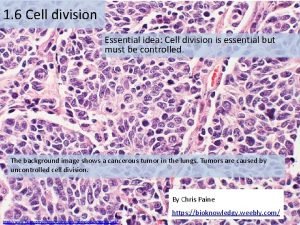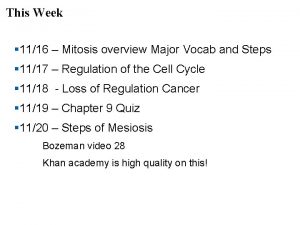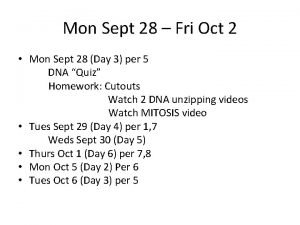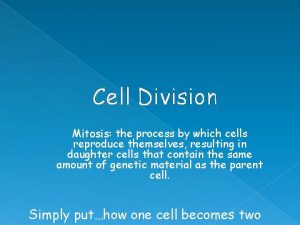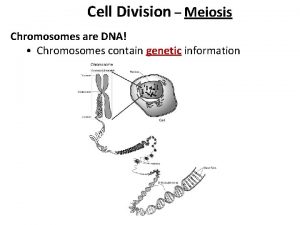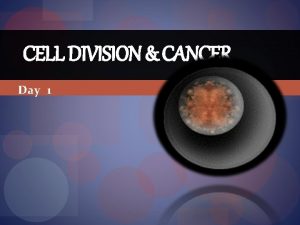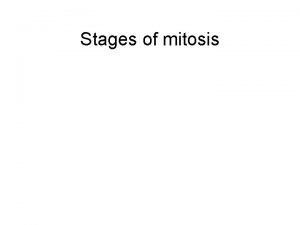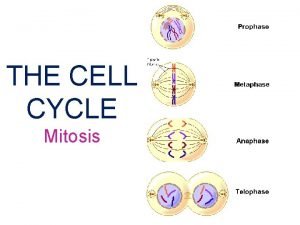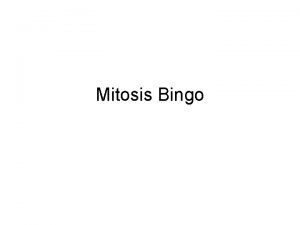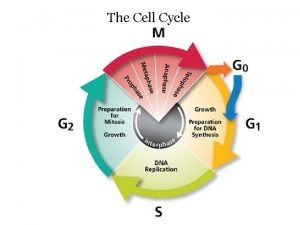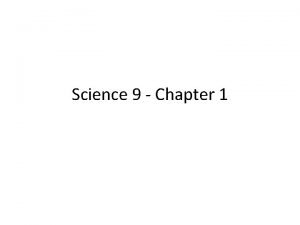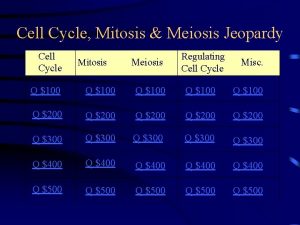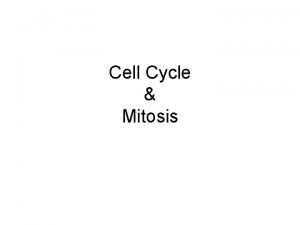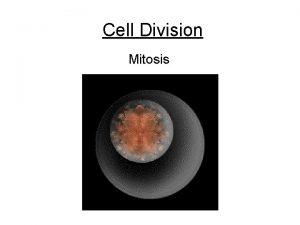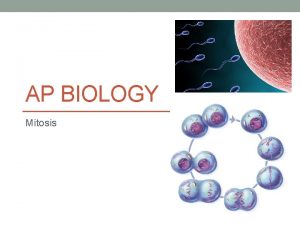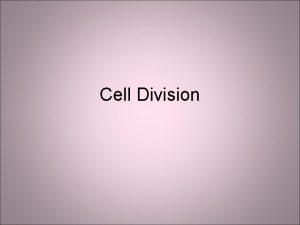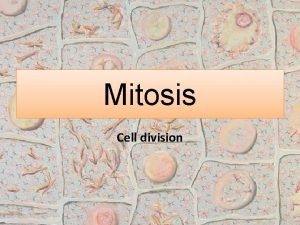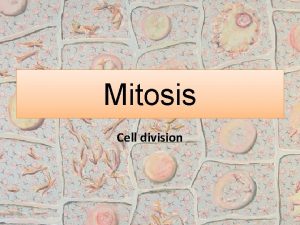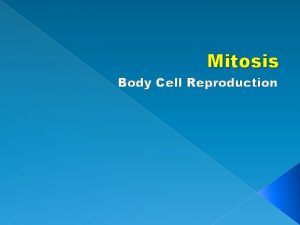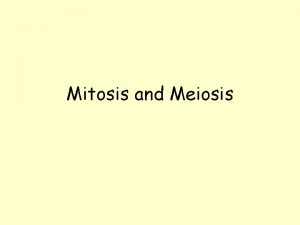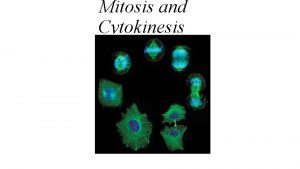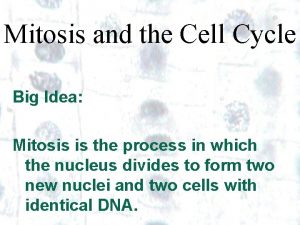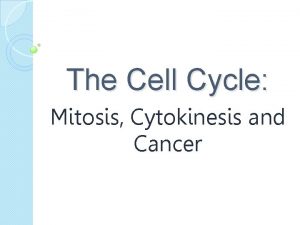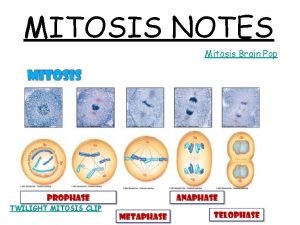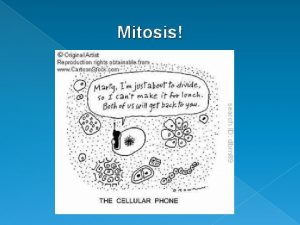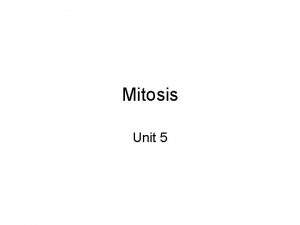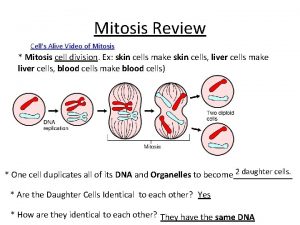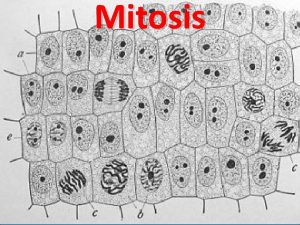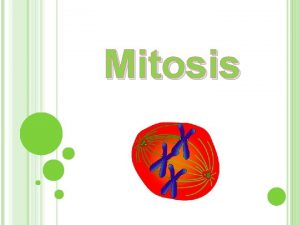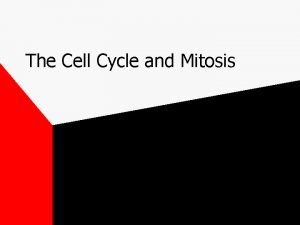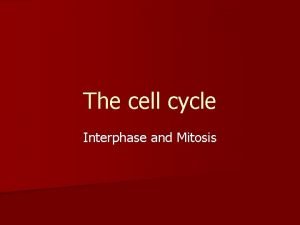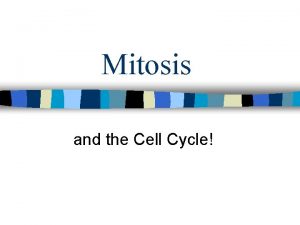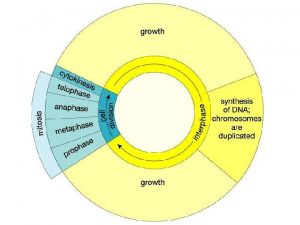THE CELL CYCLE and MITOSIS The Cell Cycle



























- Slides: 27

THE CELL CYCLE and MITOSIS

The Cell Cycle is divided into 5 phases. Each phase is characterized by specific events which make the phases easy to

• Mitosis is the division of the nucleus. • Mitosis is followed by cytokinesis or division of the cytoplasm.

This division produces two identical daughter cells. Each daughter cell has an exact copy of the chromosomes from the parent cell.

1. INTERPHASE Interphase is the busiest time in the division process. It is actually the time between divisions.

The major event in interphase is “THE CELL MAKES COPIES OF ALL ITS CHROMOSOMES. ”


2. PROPHASE Prophase is the longest phase of mitosis. .

• The nuclear membrane and nucleolus disappear.

• During prophase The centrioles begin to move apart. • The chromatin coils into visible chromosomes.

Each duplicated chromosomes is made of two halves called sister chromatids.

Each chromosome consists of two chromatids attached by a structure called the centromere.



• Also during prophase a system of microtubules called the spindle fibers begin to form between the centrioles.


3. METAPHASE • During metaphase the chromosomes attach to the spindle fibers and line up in the middle of the cell


4. ANAPHASE • The centromeres split apart and the chromatid pairs separate. They are then pulled toward opposite ends of the


5. TELOPHASE • MANY OF THE CHANGES THAT TOOK PLACE IN PROPHASE BEGIN TO REVERSE.

• The chromosomes uncoil, the spindle disappears, and a new nuclear membrane forms around each group of chromosomes

• The cytoplasm begins to divide, with a groove forming around the middle of the cell.


• Finally the cytoplasm divides (cytokinesis) forming two new cells identical to the original parent cell


Images from the University of Arizona Biology Project http: //www. biology. arizona. edu/ cell_bio/cell_bio. html
 Essential idea
Essential idea Concept map of mitosis and meiosis
Concept map of mitosis and meiosis Cell cycle chart
Cell cycle chart Non kinetochore microtubules
Non kinetochore microtubules Events of the cell cycle
Events of the cell cycle Cell cycle and cell division
Cell cycle and cell division Mitosis meiosis
Mitosis meiosis Cell division mitosis and meiosis
Cell division mitosis and meiosis Biology.arizona.edu/cell bio/activities/cell cycle/01.html
Biology.arizona.edu/cell bio/activities/cell cycle/01.html Onion cell mitosis labeled
Onion cell mitosis labeled How do you know
How do you know Does meiosis occur in humans
Does meiosis occur in humans Cell mitosis
Cell mitosis Phase of mitosis
Phase of mitosis Mitosis
Mitosis Youtube.com
Youtube.com Mitosis
Mitosis Cell mitosis
Cell mitosis Venn diagram of mitosis and meiosis
Venn diagram of mitosis and meiosis Comparison of mitosis and meiosis
Comparison of mitosis and meiosis Advantages of diaphragm cell
Advantages of diaphragm cell Prokaryotic
Prokaryotic Animal cell and plant cell venn diagram
Animal cell and plant cell venn diagram Plant cell and animal cell diagram
Plant cell and animal cell diagram Nucleolus function in animal cell
Nucleolus function in animal cell Primary cell and secondary cell
Primary cell and secondary cell Difference between bacteria and plant cell
Difference between bacteria and plant cell Life
Life
